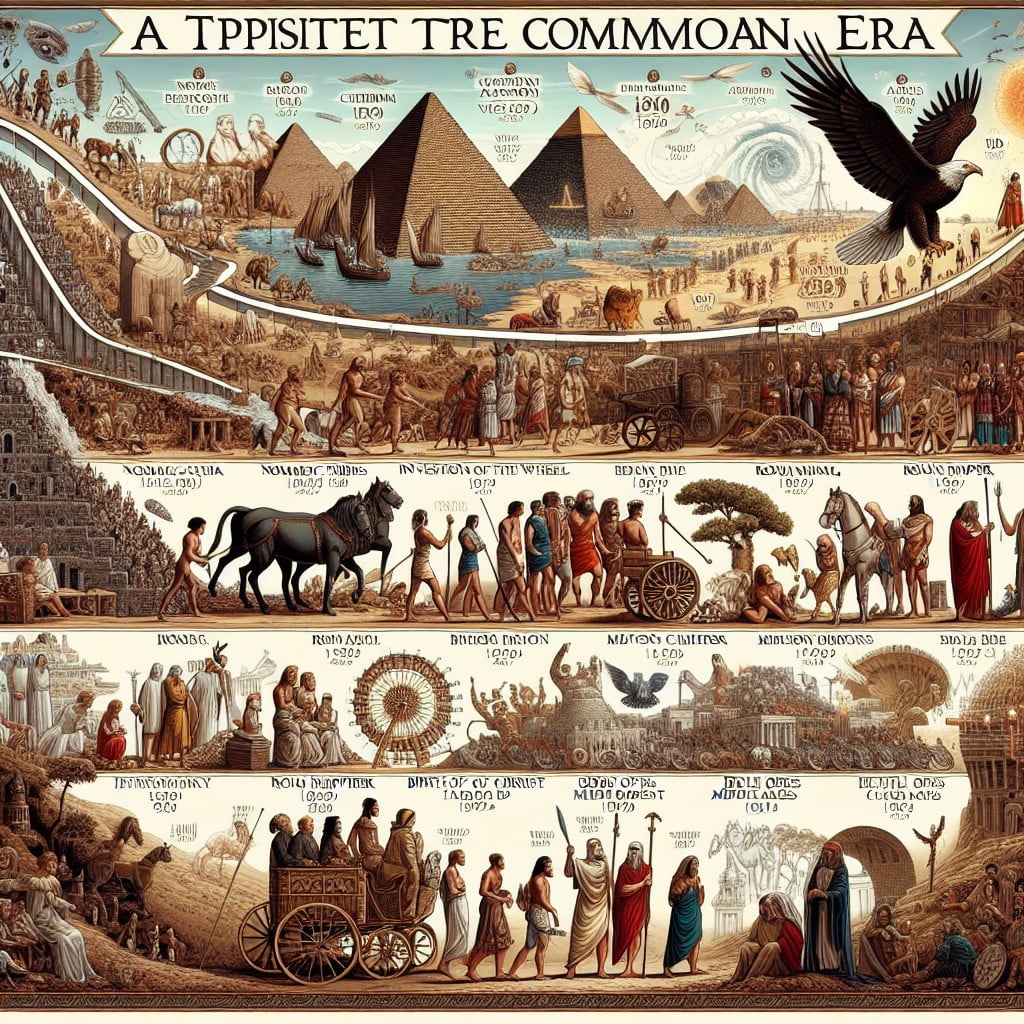Venturing through an intriguing exploration of historical timescales, we may discover the contemporary age of Jesus Christ because it serves as a unique profile of human history intertwined with spiritual beliefs.
Key takeaways:
- Jesus was likely born between 4 and 6 B.C.
- Age at death estimated to be around 33 years old.
- Jesus would be approximately 2028 years old today.
- Theological focus on Jesus’ eternal existence, not his numeric age.
- Gregorian and Hebrew calendars have differences in counting years.
Historical Context of Jesus’ Birth

The birth of Jesus is traditionally marked at around 4 to 6 B.C., based on historical and astronomical clues. This period aligns with the reign of King Herod in Judea, as chronicled by the historian Flavius Josephus. Herod’s rule provides a key timeframe for historians as he died in 4 B.C., suggesting Jesus’s birth occurred slightly before this date.
Roman occupied Judea, where Jesus was born, was a province fraught with political and religious complexity. It was a time of prophetic expectation among the Jews, with anticipation for a Messiah to deliver them. The nativity story also points to a census conducted by the Romans, further anchoring Jesus’s birth in a real historical event, though the exact dates of these events remain a matter for scholarly debate.
The Gregorian calendar, which most of the world uses today, was intended to reflect the year of Jesus’s birth as year 1. This perspective gives us a starting point to determine his age, if he were present today, by simply adding the current year number.
Understanding B.C. and A.D

B.C. stands for “Before Christ,” a designation used to number years before the estimated birth of Jesus. On the other side, A.D. comes from the Latin phrase “Anno Domini,” which means “In the year of our Lord,” referring to the years following Jesus’s birth.
The A.D. system was devised in the 6th century by a monk named Dionysius Exiguus. It’s worth noting that contemporary academics tend to use B.C.E. (Before Common Era) and C.E. (Common Era) for historical accuracy and inclusivity.
The starting point for the A.D. system aligns roughly with the historical birth of Jesus, but there is no ‘year zero’ in this scheme. Instead, 1 B.C. is immediately followed by A.D. 1. Understanding this timeline is crucial when trying to determine Jesus’ hypothetical current age, as it establishes a baseline from which to count the years that have passed since his birth.
The accurate use of B.C. and A.D. is essential in historical dating as it gives context and framework to our current Gregorian calendar, which is widely used today.
Approximate Year of Jesus’ Birth
Most scholars agree that Jesus was born between 6 and 4 B.C. This estimation aligns with historical accounts detailing Herod the Great’s reign, who died in 4 B.C.
Identifying the precise year is complex due to discrepancies in historical records and the transition from the Julian to the Gregorian calendar.
Despite these challenges, the consensus on this timeframe helps anchor the chronology of the New Testament narrative.
Estimation of Jesus’ Age At Death
Scholars generally agree that Jesus was about 33 years old when he was crucified. This conclusion draws on historical and biblical accounts, particularly the Gospels, which suggest he began his public ministry around the age of 30 and it lasted approximately three to four years.
Although precise details of his birth and death dates are a matter of debate, the most widely accepted age at death aligns with early Christian teachings and tradition. The age of 33 also holds significance for some theologians, symbolizing the fulfillment of divine purpose within a relatively short lifespan.
Calculation of Current Age If Jesus Were On Earth
To determine the age of Jesus if he were living today, scholars typically align with the Gregorian calendar, which is the most widely used civil calendar. Here are key points in the calculation:
- The consensus places Jesus’ birth between 4 B.C. and 6 B.C., with many scholars favoring the earlier estimate.
If Jesus were born in 4 B.C., you would subtract 4 from the current year and add 1 (as there is no year 0).
For instance, in 2023, this calculation would look like 2023 + 4 + 1, which equals 2028.
Jesus’ age, therefore, would be 2028 years, if he was indeed born in 4 B.C.
If he were born in 6 B.C., using the same calculation method, he would be 2028 + 2, which sums up to 2030 years old.
Keep in mind these calculations are estimates, as the exact date of Jesus’ birth was not recorded contemporaneously.
Theological Perspective: Jesus Is Still Alive
From a theological standpoint, the question of Jesus’ age is transcended by the belief in his eternal existence. Christianity teaches that after his crucifixion, Jesus rose from the dead and ascended into heaven. Thus, his presence is not confined to physical parameters such as age.
Key points include:
- Christ’s Resurrection: Symbolizes victory over death, affirming his perpetual presence.
- Doctrine of the Trinity: In Christian faith, Jesus is considered the Son within the Holy Trinity, existing beyond temporal constraints.
- Eternal Life: The New Testament often refers to Jesus bestowing eternal life onto his followers, reflecting his unending existence.
- Spiritual Presence: Believers experience Jesus alive today through spiritual practices, personal faith, and community worship.
These concepts focus not on the numeric age of Jesus but on his enduring spiritual presence and influence within Christianity.
Scholarly Consensus On Jesus’ Date of Birth and Crucifixion
Scholars generally agree that Jesus was born between 6 and 4 B.C., based on historical records surrounding King Herod’s reign, who died in 4 B.C. This timeframe is deduced from the account of Herod the Great’s involvement in the Christmas narrative, as he was alive during Jesus’ birth.
The crucifixion date is slightly more complex, but most historians place it around 30 to 36 A.D. Different methods, such as examining the Jewish Passover dates and correlating Roman historical records, help narrow down this timeline.
The exact dates of Jesus’ birth and death are not definitively recorded, leading to estimates rather than precise days. These approximations, crucial for historical analysis, have less bearing on faith traditions, which focus on the spiritual significance of Jesus’ life and teachings.
Cultural Impact of Jesus’ Age Today
Reflect on the significance of Jesus’ age had he walked the Earth in modern times. Imagine the profound reverence and intrigue that might envelop the collective global conscience. His teachings, parables, and life events would perhaps be commemorated with even greater fervor and specificity, considering the tangible concept of his age.
Moreover, consider how age influences perception; a 2000-year-old Jesus would embody wisdom and experience far beyond that of any living person, potentially impacting contemporary religious practice and faith expressions.
Now consider the hypothetical scenario’s societal ramifications: holidays such as Christmas and Easter might take on new dimensions of celebration or reflection. Pilgrimages to historical sites in Jerusalem and around the world could gain extraordinary popularity, possibly becoming global events marked by unity and solidarity. The presence of a figure of such profound antiquity would likely inspire discussions across diverse fields such as theology, philosophy, and ethics about age, mortality, and the human experience.
Comparing Gregorian Calendar to Hebrew Calendar Systems
Understanding the differences between the Gregorian and Hebrew calendars is crucial in estimating the age of historical figures, particularly someone as significant as Jesus. The Gregorian calendar, introduced in 1582 by Pope Gregory XIII, is solar-based, with a common year having 365 days and a leap year 366 days. This is the system most of the world uses today.
Conversely, the Hebrew calendar is lunisolar, primarily based on lunar months with periodic intercalations of an extra month to align with the solar year. It has 12 months but adds a 13th month seven times in a 19-year cycle. This ensures that holidays remain in their proper seasons, as many Jewish holidays are agriculturally and seasonally related.
1. Jesus’ lifespan according to the Gregorian calendar is calculated in solar years, from his birth to his crucifixion.
2. The Hebrew calendar would provide a slightly different age due to the intercalated months and its distinct start of the year.
3. Religious observers might reflect on Jesus’ age using the Hebrew calendar to retain the connection with the traditional Jewish system of his time.
4. Discrepancies between the calendars may appear minor but can shift the context of events and ages by several years when assessing historical timelines.